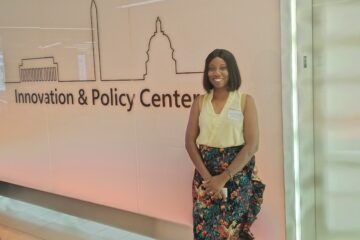One thing we can definitely thank Gen Z for is the unending catchphrases they come up with. From ‘it’s giving*’ to ‘that’s on periodt*’, the list is endless but one that I have really come to like is ‘radiating main character energy’.
Main character energy refers to a quality where an individual prioritizes himself or herself. It is about being the star of your own show and exuding self-confidence. In the context of this piece, I am looking at it as a person or idea that takes center-stage. This is how I think of Communications in human-centered design (HCD) when developing nonprofit solutions. Serving with Medici Road in the past year has deepened my understanding of the concept and while it is easy to only look at it from the perspective of product development and program design, I often ask myself how exactly Communications can be leveraged at different points in HCD. After all, that’s what I do.
Human-centered design is an innovative approach to developing solutions that puts people at the center of the entire process . Popularized by IDEO, “it’s a process that starts with the people you’re designing with and ends with new solutions that are purpose-built to suit their needs.” So, there is no surprise that many nonprofits have embraced or are on the path to embracing it. The five (5) steps of the approach are: empathize, define, ideate, prototype and test (although a 6th step of ‘implement’ is often implied). As you might have guessed, this is definitely not a linear process. The beauty of HCD is its iterative nature. I have to acknowledge here that there are other principles to be applied when going through the 5 steps I have mentioned.
Now, enter the main character in all of its rizz*! How does Communications fit in here?
The context of Communications here is a set of varied targeted strategies for engaging diverse audiences for a predetermined goal. This is communication on both an interpersonal level and beyond, so it includes digital methods, traditional media and in-person group engagement sessions. Communications play a crucial role in data-gathering, the dissemination of gathered data, effective tests of solutions and driving the adoption of new solutions.
Therefore, allowing Communications take center-stage gives room for the following to happen.
-Identifying needs: For illustrative purposes, riddle me this: in the unlikely event that you have to, how would you cut down a tree? From its branches? Definitely not. With tools like the problem-tree analysis, we know that the key to understanding a problem lies in identifying the roots but that cannot be done by merely reading research from the internet- which is the pitfall we often fall in because we tell ourselves we just do not have the time to sit with people ask questions. However, employing Communications strategies here will help the team engage the right voices to identify what the problems are, why they exist and an equitable starting point.
-Understanding and confronting bias: We are all biased. Let’s start with this fact: as long as you are human, you are biased due to your background, environment and exposure to information over the years. Employing open, honest Communications with the aim of identifying and uncovering biases on a specific matter is a step towards uncovering harmful patterns and narratives that perpetuate the negative status quo. Let me give an example to contextualize this. Imagine that your team organizes a series of group discussions with different groups and through your HCD exercises (there are a bunch of them), you discover a recurring theme of bias common with a specific group, it would be worthwhile to expand your research by synthesizing your findings through a series of blog posts, videos and other social media content. This why, you would be expanding the conversation and inviting other people to look inward.
-Solving the 6-9 Paradox: Picture this: Mr A and Miss B are seated opposite each other in a room. Mr A can only see the jug behind Miss B and Miss B can only see the radio behind Mr. A. Both parties have different but factual views of the same room. Rather than discount each other’s perspectives, merging both would create a fuller picture of the items in the room. Similarly, if Mr A prints out (from a computer) a 6 on a sheet of paper, from Miss B’s vantage point, it could be a 9. So, is it a 6 or a 9? This is what I call the 6-9 Paradox and can only be solved through proper and effective communication. Think of Mr A and Miss B representing various subsets in society and through Communications we can get them into the hypothetical room to have conversations to solve the paradox.
Harnessing Community Power: As a student of Development Communication in the university, I learned about ownership; how a participatory approach to community engagement will ensure that the community not only accept an intervention/solution but take responsibility for its success. Building on that principle, is using Communications to help communities to identify their power (agency) and find ways of putting it to use. It is about creating a system that allows communities to leverage their voice for self-advocacy, which is a branch of Communications.
These 4, in my opinion, are why Communications give ‘main character energy’ in human-centered design. It is the centerpiece that fuels the success of HCD but what does it look like in practice? You can find out here.
Meanwhile, share your thoughts on this piece. Do you think it’s giving or am I being delulu*?



